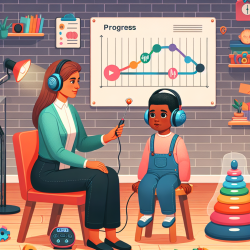Understanding the Link Between Auditory Processing and Speech-Sound Disorders
As practitioners in the field of speech therapy, it is crucial to continually refine our understanding of the complexities involved in speech-sound disorders (SSDs) in children. A recent study titled The influence of (central) auditory processing disorder on the severity of speech-sound disorders in children provides valuable insights into how central auditory processing disorders (CAPD) can exacerbate speech-sound disorders, offering new pathways for effective intervention.
Key Findings from the Research
The study highlights several pivotal findings:
- Children with both SSD and CAPD tend to exhibit more severe phonological difficulties than those with only SSD.
- The Percentage of Consonants Correct-Revised (PCC-R) index is a valuable tool for assessing the severity of speech impairments and identifying children who may also have CAPD.
- A cutoff value was established for the PCC-R index, which can predict the likelihood of a child with SSD also having CAPD.
Implementing Research Outcomes in Practice
For practitioners, these findings can significantly enhance diagnostic and therapeutic strategies:
1. Use of PCC-R Index
The PCC-R index serves as a quantitative measure to evaluate the severity of speech impairment. By employing this index, practitioners can more accurately identify children who might benefit from a comprehensive auditory processing evaluation.
2. Identifying Children at Risk
With the established cutoff values for the PCC-R index, practitioners can discern which children are at a higher risk of having CAPD. This enables timely referrals for auditory processing evaluations, ensuring that no aspect of the child's speech development is overlooked.
3. Tailoring Interventions
Understanding the relationship between CAPD and SSD allows for more targeted interventions. Therapists can incorporate auditory processing exercises into their sessions, focusing on skills such as binaural integration and temporal ordering, which are crucial for phonological development.
Encouraging Further Research
While the study provides a robust framework for understanding the interplay between CAPD and SSD, it also opens avenues for further research. Practitioners are encouraged to explore the following:
- Investigate the long-term outcomes of children who receive early interventions targeting both SSD and CAPD.
- Examine the effectiveness of different therapeutic approaches in addressing the dual challenges of SSD and CAPD.
- Study the role of technology in enhancing auditory processing skills in children with speech-sound disorders.
By delving deeper into these areas, we can continue to refine our approaches and provide even more effective support to children with speech-sound disorders.
Conclusion
The intersection of CAPD and SSD presents unique challenges and opportunities for speech therapists. By leveraging the insights from this research, practitioners can enhance their diagnostic accuracy and therapeutic efficacy, ultimately empowering children to overcome their speech challenges and thrive.
To read the original research paper, please follow this link: The influence of (central) auditory processing disorder on the severity of speech-sound disorders in children.










